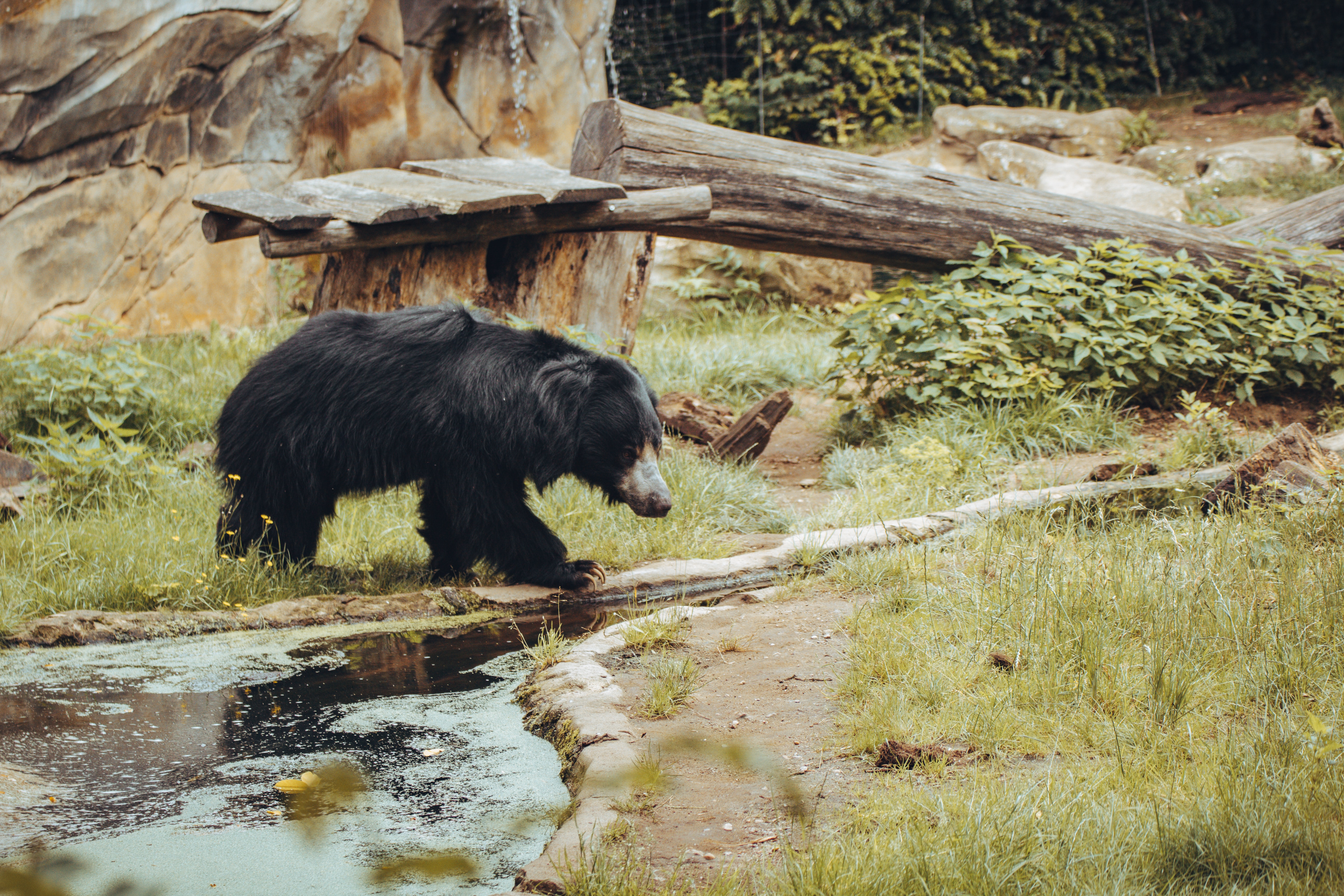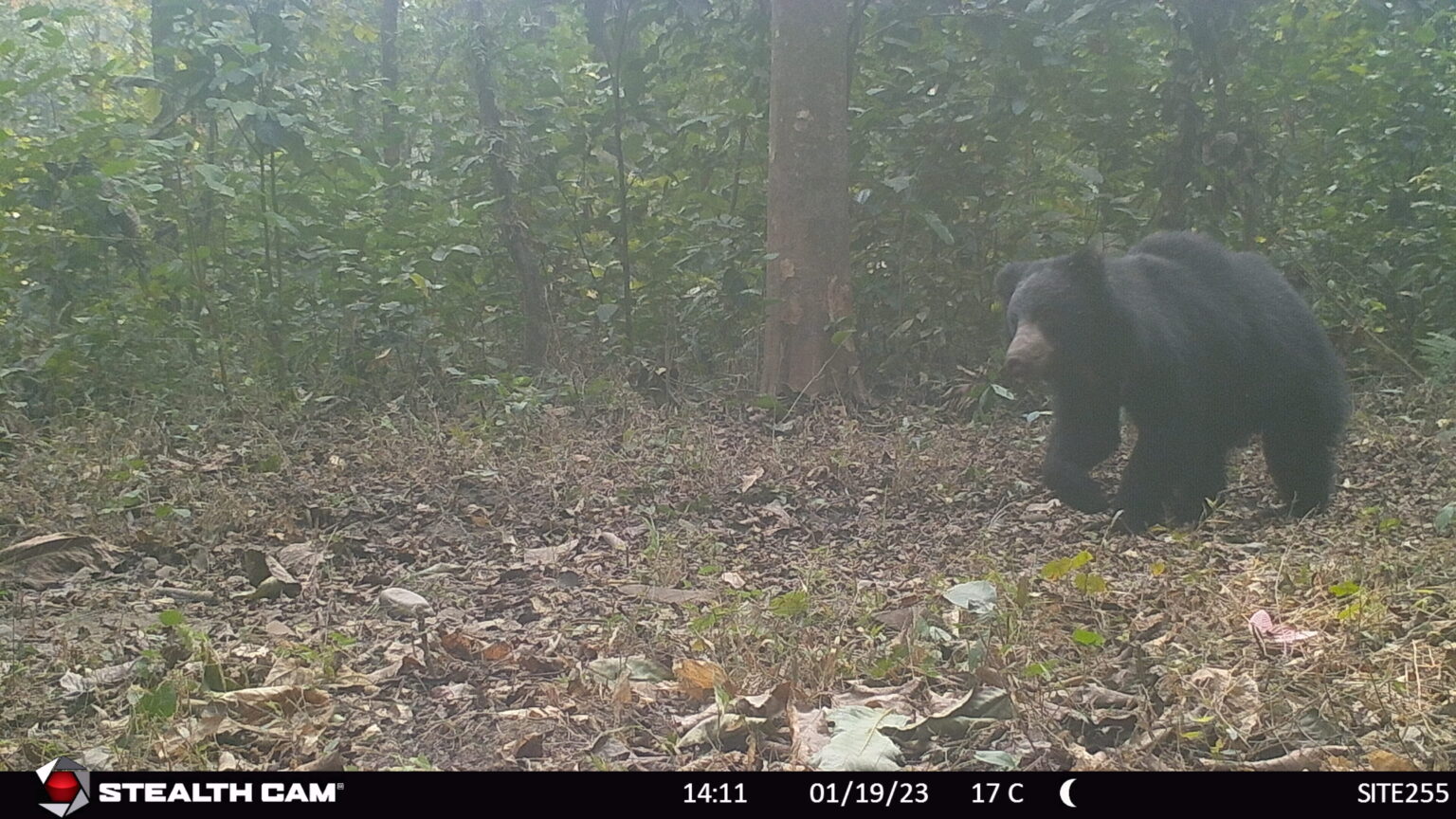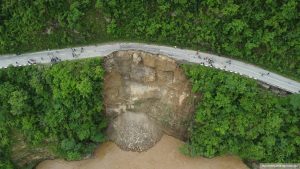
Hari Prasad Sharma recalls being astonished when he visited the Chure region in Nepal’s southern Madhesh province to study sloth bears.
Sharma, an associate professor of zoology at Tribhuvan University in Kathmandu, had planned to install camera traps in the region to study the bears, Melursus ursinus, in what was believed to be their prime habitat. But the human footprint in the area was overwhelming, he says.
“The extraction of resources in the area is so massive that we didn’t find any fallen trees or twigs in the forests on which termites that bears feed on live,” Sharma says.
This observation is echoed in a recently published study documenting Sharma and his team’s work. It suggests that overexploitation of forest resources outside protected areas in Nepal could be pushing the population of sloth bears inside protected areas in search of adequate food.
The camera trap-based study was carried out in the subtropical forests of the Chure region, which covers 9,661 square kilometres (3,730 square miles) between Parsa National Park and Koshi Tappu Wildlife Reserve, excluding human settlements and farms.
The team placed 152 cameras throughout the study area and collected data between December 2022 and March 2023.
“We recorded a total of 46 detections of sloth bears across 30 of the total 152 sites,” Sharma says.
Sloth bears in the Chure

The Chure, also known as the Siwalik Range, is the first of the fold mountains rising from the Gangetic plains in the south to the Himalayas, home to the tallest mountains in the world. It runs some 1,600 kilometres (1,000 miles) east to west, from the Tista River in India, across Nepal, northwestern India, and into northern Pakistan. In Nepal, the range occupies around 13% of the country’s total land area and is considered rich in biodiversity and ecosystem services.
However, in recent years, uncontrolled extraction of sand, gravel and forest resources from the fragile landscape, considered crucial for the maintenance of groundwater levels in the Gangetic plains, has led to severe degradation.
After retrieving the camera trap records, Sharma and his team tried to identify factors associated with where sloth bears were likely to occur in the study area. They also looked at variables such as the presence of humans and tigers and leopards in the area.
Nepal is home to three species of bears that have adapted to different elevations. The critically endangered Himalayan brown bear (Ursus arctos) dwells in the mountains, while the Asiatic black bear (Ursus thibetanus) occurs in the hills and the sloth bear is found in the plains. The latter two are considered vulnerable on the IUCN Red List.
Sloth bears, which once ranged as far east as Bhutan, are now believed to be limited to Nepal, India and Sri Lanka, where they face threats from urbanization, agriculture, mining and quarrying, roads and railroads, hunting and trapping, and human intrusion into their habitats.
The Chure study confirmed many of those threats, especially for habitats outside protected areas. “The main takeaway from the study is that the intricate relationships between sloth bears, humans, large predators, and livestock, seem to have been disturbed,” Sharma says.
The study reported a modest detection probability with low occupancy in the region. By contrast, a similar study in Chitwan National Park, part of the Chitwan-Parsa Complex, had shown that sloth bears were widespread in the protected areas.
“We observed a higher detection probability of sloth bears in the western part of the PKC, mostly in the areas of Parsa and Bara districts,” the new study says. “There are some places in the middle part of the PKC, mainly the Chure area of Sarlahi and Dhanusha districts, where there is a mild probability of the species detection.”
However, the detection probability was virtually nil in the eastern part of the study site, adjacent to Koshi Tappu Wildlife Reserve.
“This suggests that some factors could be pushing sloth bears westward and into protected areas,” Sharma says.
The authors of the study say they believe this could have happened because of the contrasting habitats found in the eastern and the western parts of the Parsa-Koshi Complex. While the western areas are close to Parsa National Park, where the distribution of these bears could be higher due to more stringent regulation of human activity, the eastern areas are near human settlements, and the Chure forests there are extremely degraded and fragmented.
The study recorded a higher detection probability of sloth bears in the buffer zone community forests and some other community forests near Parsa National Park. This suggests the bears do well inside protected areas, as would be expected, compared to nonprotected areas, the authors of the study note. Protected areas also provide shelter to tigers and leopards, whose presence seems to be positively correlated with the presence of sloth bears, Sharma says.
The Parsa-Koshi Complex has widely been seen as presenting a major gap in Nepal’s protected area network in the plains, connecting Shuklaphanta and Bardiya national parks in the west to Chitwan and Parsa in the east. Only Koshi Tappu remains disconnected from the network.
The study calls on authorities implement a conservation plan in the area between Parsa and Koshi Tappu as this would benefit not only sloth bears but also many threatened species inhabiting the lowlands of Nepal, such as tigers and elephants.
Researcher Rajan Paudel, who studied sloth bears in Nepal’s protected areas for his Ph.D., but wasn’t involved in this recent study, says its findings are timely and relevant, as it focuses on sloth bears outside protected areas, which have always been underexplored in Nepal.
“It also sends a message that we need to take action to save the eastern Chure,” he says. “Our study had found low genetic diversity among sloth bears in the country. This could be attributed to lack of corridors for different sub-populations to interact.
“Therefore, the first step towards conserving sloth bears could be the establishment of corridors where they can move about freely,” Paudel says.
This story first appeared on Mongabay and Onlinekhabar is republishing it under a Creative Commons licence.
























